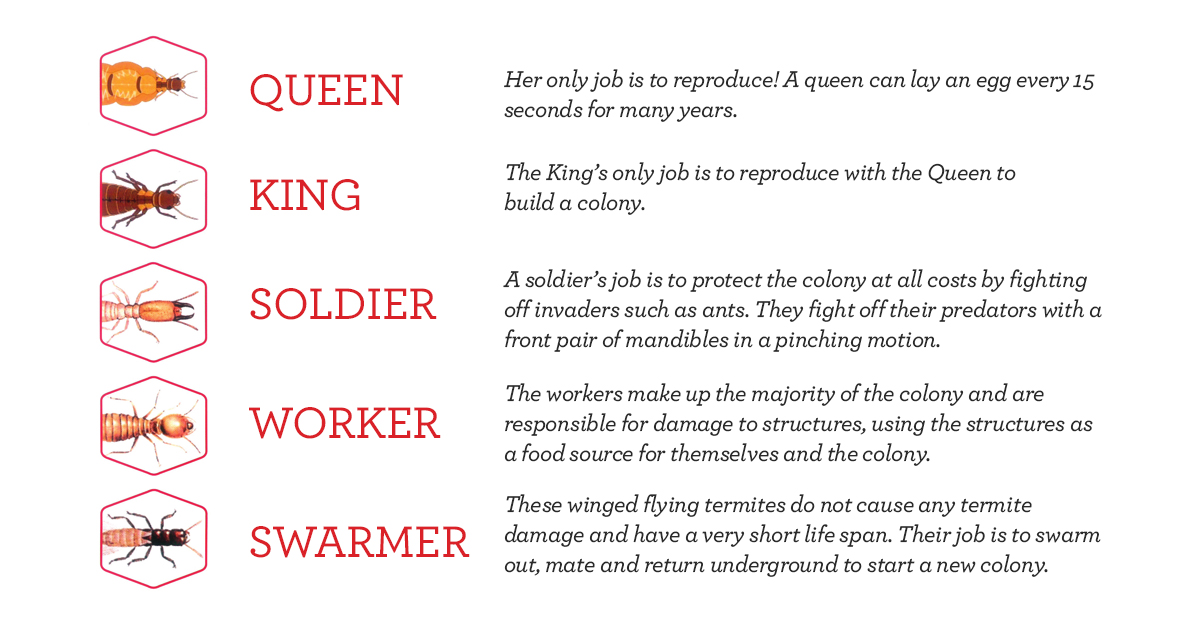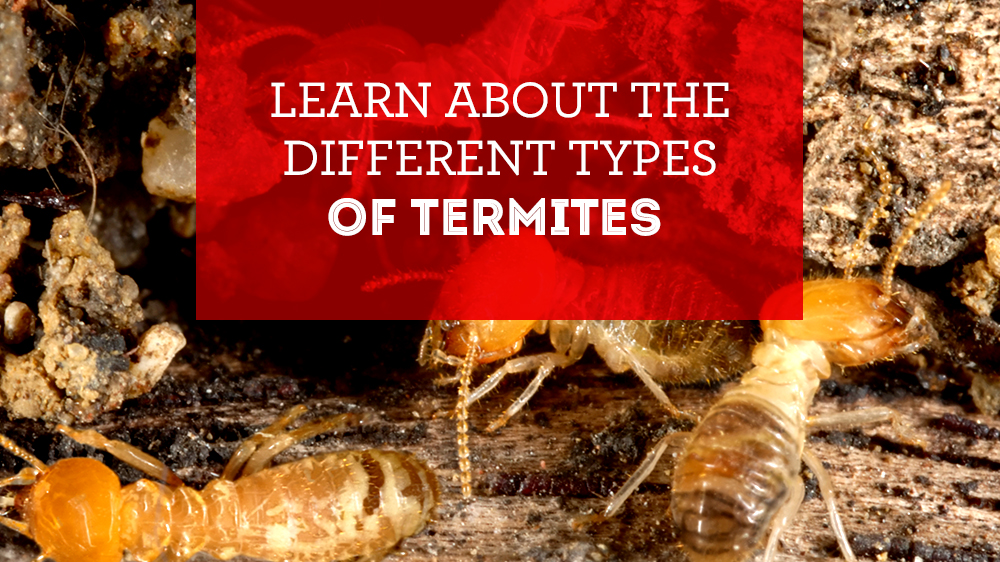Due to COVID-19, families living in Louisiana are at their homes more than ever. Not only should you be taking necessary health precautions, but you should also be looking out for persistent pests like termites! We are in the midst of termite season and it’s important to know if they are swarming your home at this time. Termites cause billions of dollars of damage every year, and they can infest any and all structures. Believe it or not, no home is safe from termites without the appropriate preventative measures.
Termite colonies are working 24 hours a day by feeding, eating and/or reproducing. One termite colony can have over 1 million members. A colony can travel over three football fields in length looking for a food source. Once a termite finds a food source, it leaves a pheromone trail to help other termites locate the source as well. Within each colony, termites perform different jobs according to their caste. There are five different members of the termite family: the Queen, King, Soldier, Worker and Alate aka “Swarmer”. Learning about the different types and how termites reproduce can help you learn what to look out for and how to control them so they don’t take over your home.

Queen
The king and queen are the breeding types of termites. The alates emerge from an existing nest, spread their wings and fly to another place. Once there, the queen sheds her wings and she and the male burrow into the ground where they start to reproduce.
The Queen’s only job is to reproduce! A queen can lay an egg every 15 seconds for many years, sometimes thousands in a single day. They are the largest in size and weigh several times that of worker termites.
King
The King’s only job is to reproduce with the Queen to build a colony. The king termite lives next to the queen, creating a very close existence for the two of them. They are buried deep within the center of the surrounding termite nest, making them the hardest to find and see.
Soldier
A soldier’s job is to protect the colony at all costs by fighting off invaders such as ants. They fight off their predators with a front pair of mandibles in a pinching motion. They are considered the protectors of the colony. These unwanted guests can vary greatly in appearance from other members of the termite colony. They have been seen to have darker heads and larger mandibles than the workers.
Worker
The workers make up the majority of the colony and are responsible for damage to structures. They feed on structures to provide a food source for themselves as well as bring the food source back to the other colony members. In most colonies, workers are wingless and soft-bodied and are the largest single group in most termite colonies.
One thing that most people don’t know is that the workers take care of the eggs and immature termites (nymphs). They also take care of the building and maintenance of the colony structures.
Swarmer
These winged flying termites do not cause any termite damage. Their job is to swarm out, mate and return underground to start a new colony. They have a very short life span outside the colony, which is why you see many dead during swarm season.
Termite swarmers emerge from tubes built by worker termites. They range in color – from yellow to black – depending on the species. These insects are often noticed around exterior lighting and window sills.
———————–
Termites are no joke and can destroy your residence before you know it! The Bug Man is happy to explain to you more about these insects and how or when you should proceed with treatment.
If swarming insects invade your home or you’ve noticed them in the soil around your property, contact The Bug Man today. You can also request a free estimate today or call us for all your pest control needs at (225) 923-2847.




